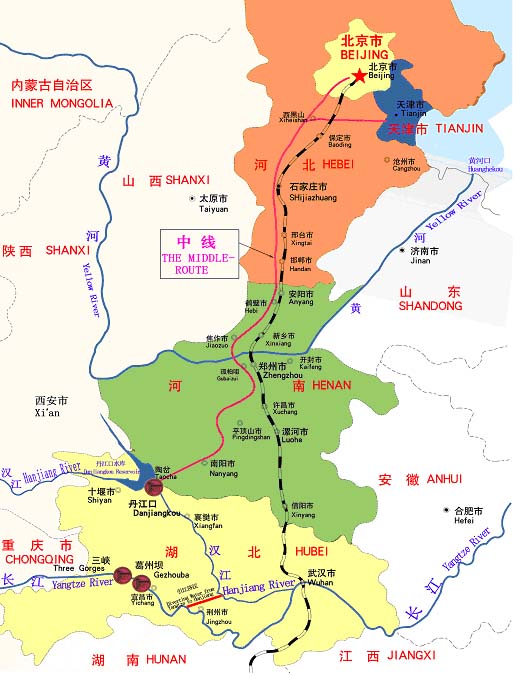The shortage of freshwater jeopardizes China’s rapid development, in particular in thirsty North China. To tackle the challenges, the Chinese government has been building a $62 billion South-North Water Transfer Project (Eastern, Middle, and Western routes). The project could divert 44.8 billion cubic meters of water per year from the Yangtze River in southern China to the Yellow River Basin in arid northern China. The Middle Route Project (MRP) for South-to-North Water Transfer diverts water from Danjiangkou Reservoir on the Han River, a tributary of Changjiang River, to Beijing City through canals. The MRP will mitigate the crisis of water resources in Beijing, Tianjin, and North China Plain, and increase the irrigated area by 0.6 million ha, 6.4 billion m3 for municipal and industrial water supply, 3.0 billion m3 for agriculture, for Beijing, Tianjin, Hebei and Henan provinces, and significantly improve the biological environment and investment environment of receiving areas, and boost the economic development in China. However, there is increasing pressure on safeguards in both quality and quantity of the water sources of the South-to-North Water Transfer.

(Middle Route for South-to-North Water Transfer from Danjiangkou Reservoir to Beijing)
The government of China is formulating a national legal framework for watershed eco-compensation, international payment for environmental services, which is intended to clarify the property rights of stakeholders, particularly the upstream and downstream in river basins. Green Water Management & Credit for China (GWM&C) is supposed to be tailored and implemented, working closely with Chinese partners, in the Danjiangkou Reservoir catchment, a representative part of the Yangtze River Basin in China. GWM&C allows quantification of erosion reduction, yield increase, sedimentation amounts, water availability, and electricity production that is needed to calculate the economic costs and benefits of environmental protection measures. This information allows the development of a financial mechanism in e.g. river catchment area’s based on upstream supply and downstream demand of water services for long-term investments in communities.
The Danjiangkou Reservoir, situated in the Danjiangkou City, Hubei province (see map above), is the water source for the Middle Route Project (MRP) for South-to-North Water Transfer which diverts water from Danjiangkou Reservoir on the Hanjiang River, a tributary of Changjiang River, to Beijing City through canals along Funiu and Taihang Mountains. The MRP will mitigate the crisis of water resources in Beijing, Tianjin, and North China, and increase the irrigated area by 0.6 million ha, 6.4 billion m3 for municipal and industrial water supply, 3.0 billion m3 for agriculture, for Beijing, Tianjin, Hebei, and Henan provinces, and significantly improve the biological environment and investment environment of receiving areas, and boost the economic development in China.
ISRIC is the coordinator for the project and works closely with a Dutch consortium (FutureWater and Nelen & Schuumans) and Chinese partners.